What are days for? Days are where we live*
Sketchbooks, ivy bees and remembering Norman Ackroyd
A selection of pages from past sketchbooks
Between the shabby, worn covers of my sketchbooks lies the story of my days. Alongside fully formed drawings are exhibition tickets, postcards, snippets from newspapers, dried leaves, drawings that failed, colour swatches, sketches made whilst standing along the field margins or sitting in my garden. All are precious. Each one charts my progress, preoccupations and are a jumble of moments past.
The earliest I still have date back to the late 1990’s, pre - internet, and flicking through them is like following the crumbs of the objects of my curiosity. There is a lack of self-consciousness - no one was going to see these except me - and I see myself trying on different hats to see what fits me best. I explore varying techniques and mediums, seeing myself drop one to find myself delighting in another. I have mentioned how over the past months, I have found it difficult to settle on what to do next, but looking back over old sketchbooks is a way of reconnecting, seeing where sparks flew. Ideas that were dropped at the time, sometimes reemerge years later, having incubated and fledged into a new form. Others remain complete in themselves and were instead a way of making sense of what I saw or to cement a moment.
Sketchbooks have always been my safe space and where, in most cases, I simply draw for pleasure. Like a diary, they were not to be shared with others, but were a private repository of my own interests and attempts to learn.
A sketch of a terrace of cottages glimpsed while walking in Much Wenlock
And then, when I returned to art after leaving teaching, the art world had completely changed and my sketchbooks were now a means to connect with those interested in what I did. On the encouragement of one of my former 6th form students, I joined Instagram and quickly became hooked. Each day at 5 o’clock, I would share what work I had done that day. It was thrilling that people liked what I did and my confidence grew. I began to create sketchbook pages, with the Insta pixie at my shoulder, in a square format and became increasingly conscious of what would photograph well and slowly, so slowly, I found myself making pages that I thought others wanted to see, rather than what I wanted to draw. As time passed, and fueling the necessity to feed the monster each day, I became less adventurous and experimental, dropping those subjects that I would explore at a whim, in favour of those that might attract more “likes” and, with time pressures, these became the staple. This wasn’t wholly negative, it did encourage me to complete regular work, to build momentum again after years of not drawing regularly, and it did draw in an audience to my work I would otherwise never have had.
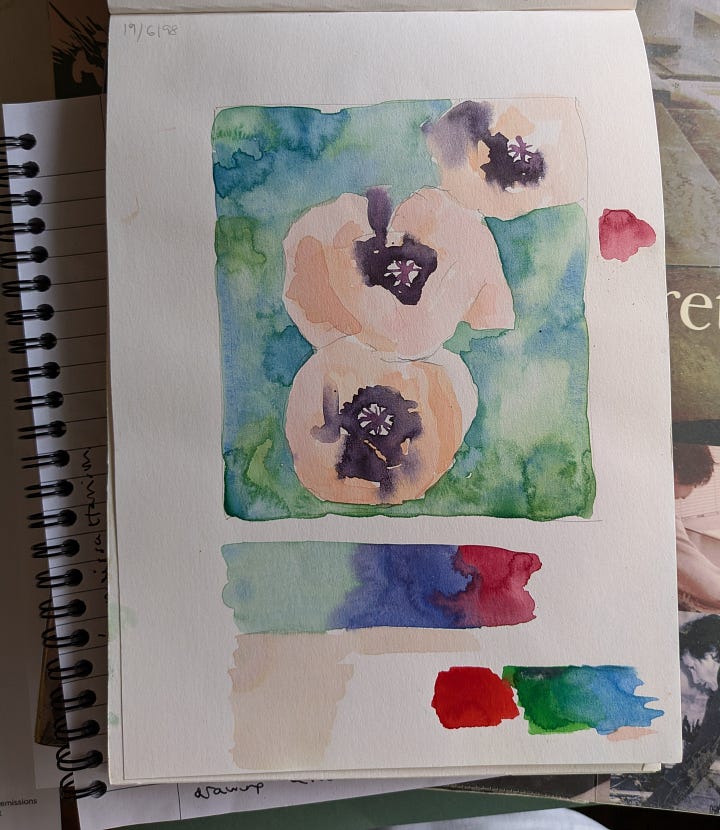
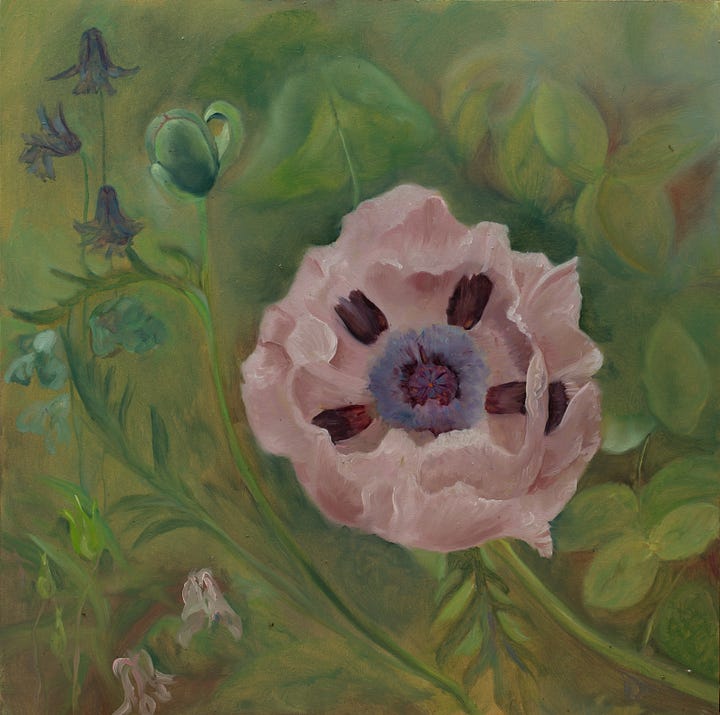
This sketch made in 1998, became this oil painting several years later
But. The enjoyment of sharing my work in this way began to fade, my sketchbooks were no longer my place of solace and experimentation. I worried if a post didn’t gain as many “likes” as an earlier one and this eventually made me falter, question what I was doing and realise that this was not why I had returned to my art. I realised that I needed to go back to the beginning and follow those crumbs again.
Looking back through those pages, the drawings that mean the most are certainly not those that are complete pages, but are ones where I had stopped to draw something that made my heart sing. There are some tiny sketches of the shapes of seeds, something that each spring, as the growing season begins, I find miraculous. There are drawings of wood pigeons perched on the cherry tree of my house in Norwich and of the greengage tree outside my studio as the light filtered through the leaves on a hot May day.
Drawings such as these take you back instantly to the moment you made them, they secure it in your memory and, looking back through old sketchbooks, you learn something about your own interests - by drawing everything that attracts, you pick up threads that you hadn’t noticed were there.
There are so many valuable reasons to keep a sketchbook- they encourage you to observe, notice details that you would have otherwise not have marked, they slow you down, encourage mindfulness - but they also help you learn about yourself and of course, no small thing, you develop a skill in drawing. Tucking an A6 sketchbook in your pocket, making a rapid drawing instead of taking a photo, no matter how unpractised, will do all of these things and no one need see it but you!
With regard to a choice of sketchbook, over the years I developed favourites. I realise that they all have black plain covers and have been chosen for their smooth, robust paper. I like the A3 Moleskines, square hardback Seawhites, whose paper seems to withstand anything I throw at it and small Daler Rowney spiral bound ones that sit in my pocket and are firm enough to hold while standing. None are expensive ( I struggle with beautifully bound ones as I fear I will muck them up) and with these I don’t need to worry about spoiling a page or turning over a fresh one when something hasn’t worked.
So with the spirit of adventure refreshed I shall start again. I have found amongst the pages drawings that could become prints and others that have me longing to draw in museums again. I may share some of the future results here, but do forgive me if I decide to keep them to myself.
Just a few of my sketchbooks on my studio shelf
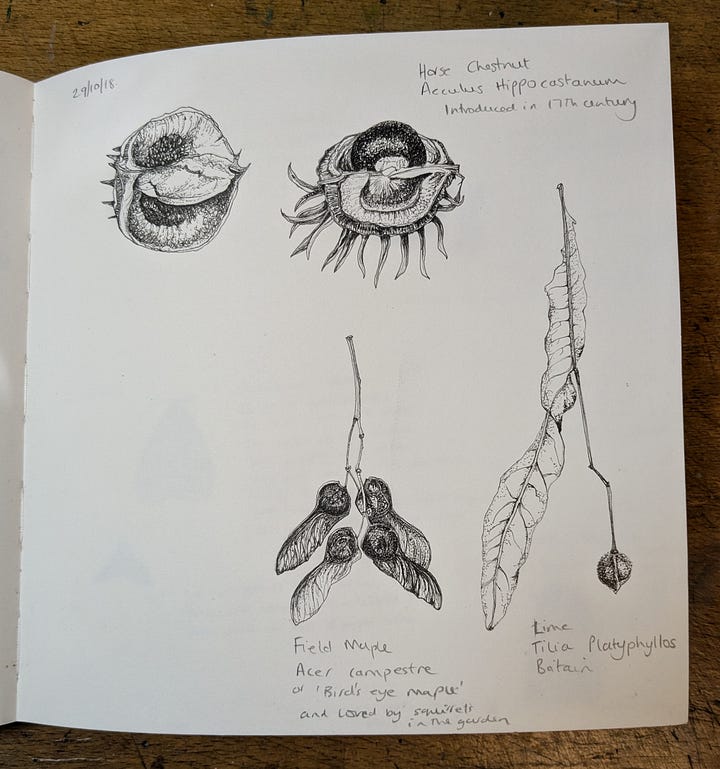
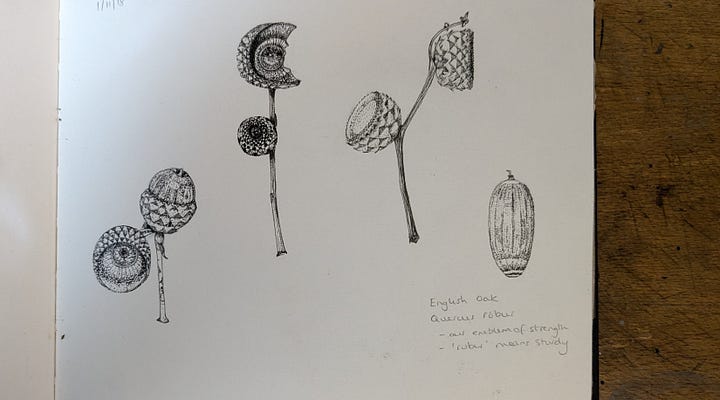
Pen and ink studies of autumn treasures
Norman Ackroyd 1938 - 2024
I was deeply saddened to hear of the death of the artist and etcher Norman Ackroyd a few days ago. If asked for my artistic hero, I would certainly say it was him.
An exhibition of his work was held at the Corn Hall in Diss a few years ago and he gave an accompanying talk, that was intended to be an hour, but which thankfully ran on for rather longer, much to the delight of his audience. He was a captivating speaker. He sat on the edge of the stage, like a little imp, and talked of his process in making etchings, his love of music and poetry, and his collaboration with poets such as Kevin Crossley - Holland and Douglas Dunn.
Although in his early 80’s, he was fizzing with energy and ideas, as he spoke of chartering small boats to sail around the remote corners of the British Isles - there were still places he wished to see and sketch. His prints were informed by his en plein air sketches, made rapidly, dozens executed on a trip. He would work on several sketchbooks at once, not a minute wasted, moving from one to another to allow the watercolour to dry. Somehow, in an alchemy of memory and great technical skill, these would become acquatints back in his Bermondsey studio, in images where you could taste the salt in the air, hear the cry of the gulls and feel the force of the waves. Fortunately there is a rich seam of wonderful interviews to listen to (the links are below) so that so that you too can share in the work of this extraordinary artist.
Little Brancaster 2004 • 10.6 x 21cm Copyright the estate of Norman Ackroyd
Norman Ackroyd on Malin Head. Photo: © Ian Ritchie from Apollo magazine
Between the Ears - Capturing Light - Hear Ackroyd travel out, at breaking light, to paint the Suffolk coast.
What artists do all day - spend a day with Norman Ackroyd inside his Bermondsey studio.
Only Artists - here he is in conversation with the writer Robert MacFarlane.
Private Passions - here he shares musical choices and talks of his upbringing in Leeds and his journey as an artist with Michael Berkeley.
Pages from Ackroyd’s Shetland sketchbook, mostly in watercolour, with ink, graphite and some wax relief. Each one has such vigour and energy capturing the experience of being out in the landscape.
Something to look out for
The back wall of my garden is covered in ivy. I know that this plant is often vilified by gardeners, but I would like to make a plea for its charms. Each year, my wall houses several nests, like a vast block of bird flatlets, housing woodpigeons at the top, with blackbirds below and the wren, whose round nest sits just above the roots as the glossy canopy begins, in the basement. While this should be enough to earn its stay, it is the arrival towards the end of September each year, as the pungent flowers begin to open, that heralds the arrival of the Ivy bees. It thrums with them. With huge almond eyes and stripey humbug jerseys, they are a delight. On the next sunny day, go hunting and enjoy.
Sketches of ivy bees on my ivy wall
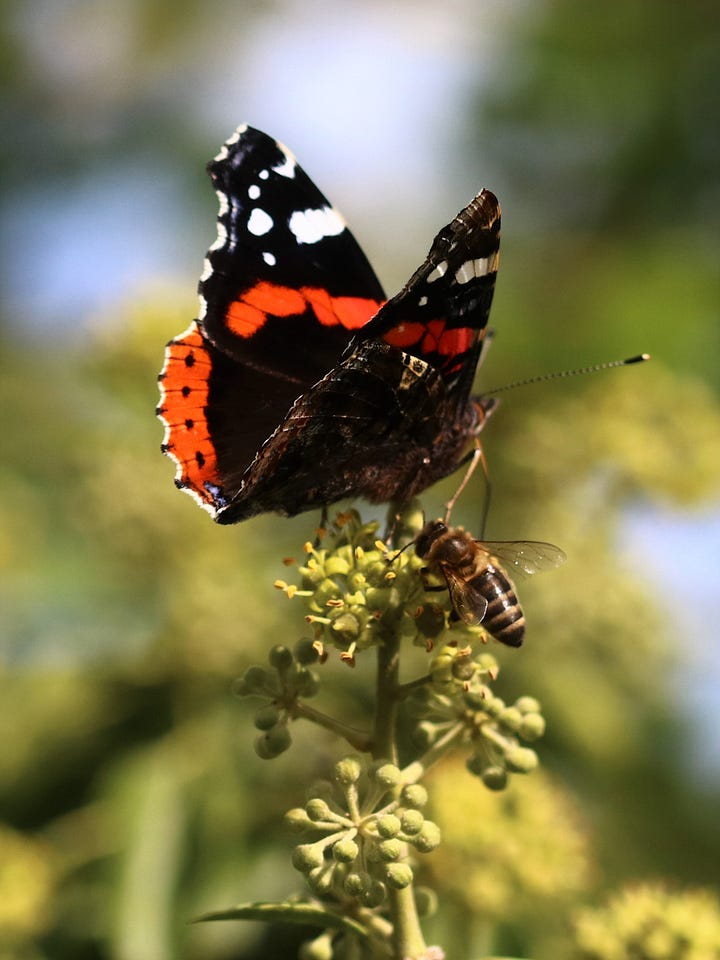
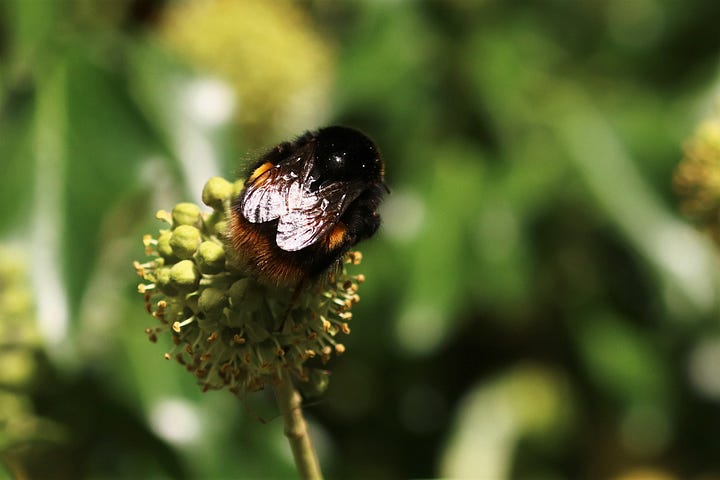
Red Admirals and Bumble bees love ivy too
Thank you for your company here. I love reading your comments and messages so please don’t be shy in saying hello! As I went to post this morning I learned that I have reached a thousand followers. Thank you to each one of you for your support and encouragement here, it really does make a difference and helps keep me going as an artist, for which I am very grateful. If you liked this post, don’t forget to press the “heart” as it really does help spread the word.
I look forward to seeing you again in a couple of weeks. In the meantime, perhaps take out a sketchbook and record these glorious autumn days.
Days
What are days for?
Days are where we live.
They come, they wake us
Time and time over.
They are to be happy in:
Where can we live but days?
Ah, solving that question
Brings the priest and the doctor
In their long coats
Running over the fields.
Philip Larkin




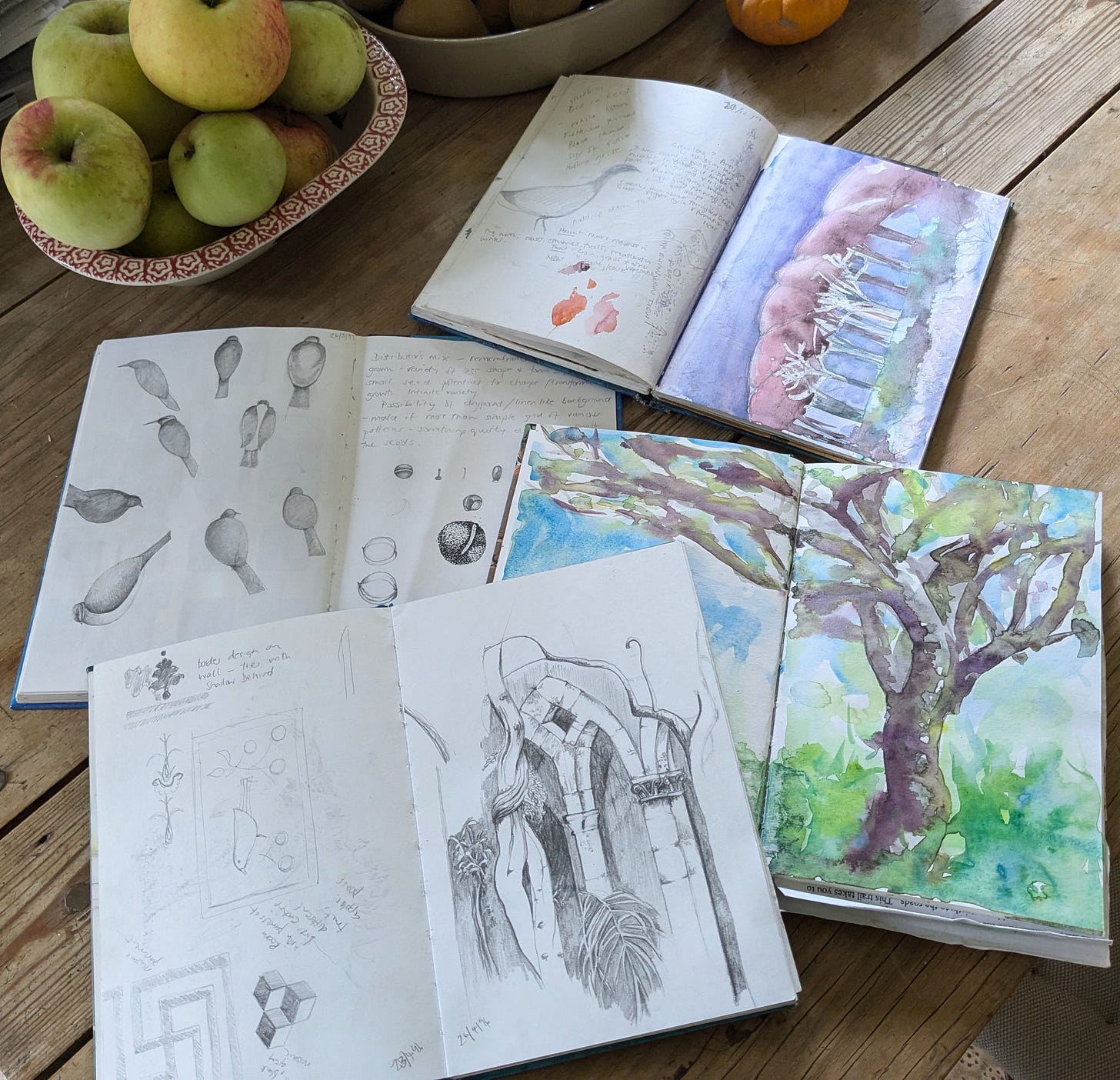
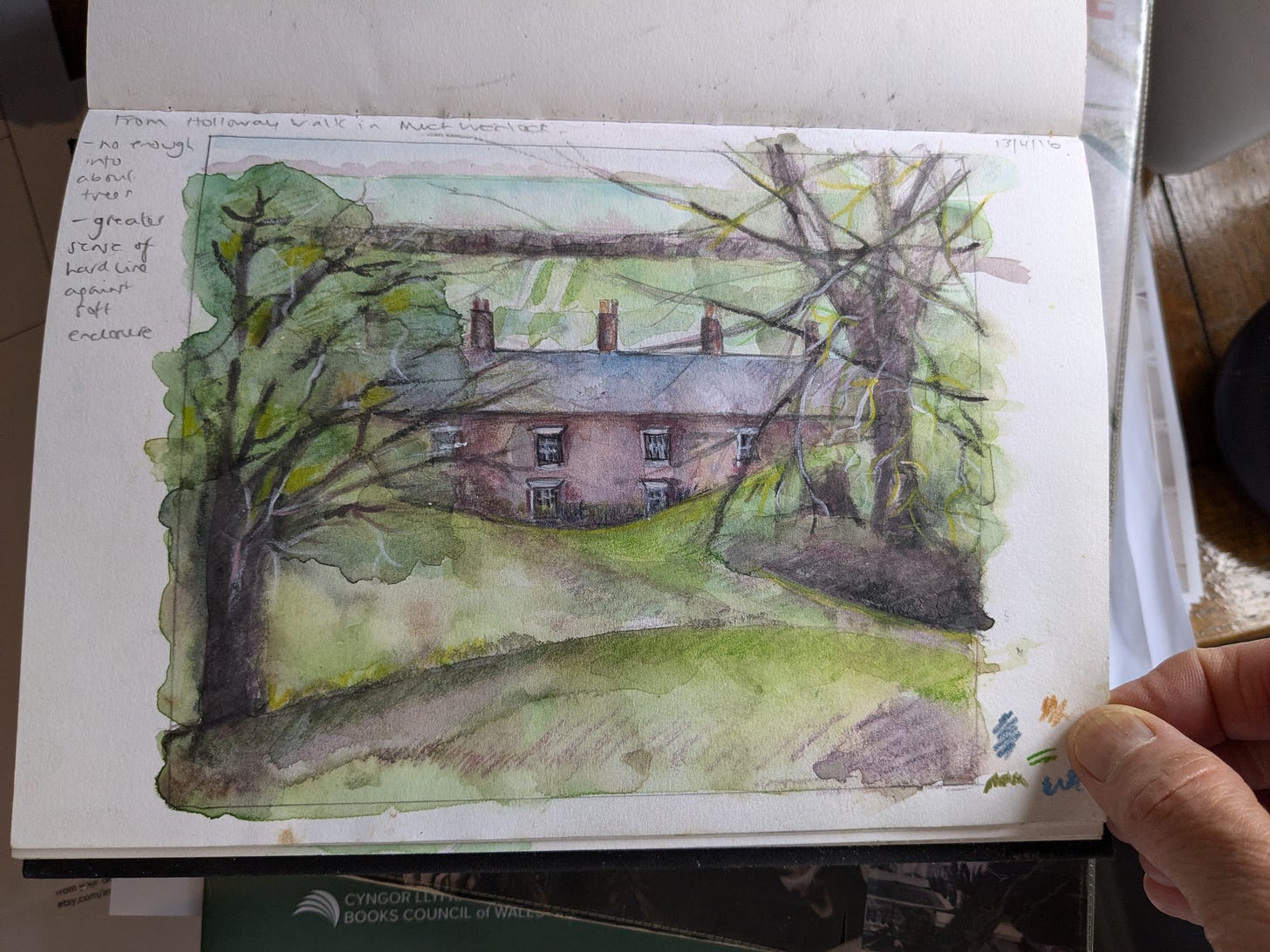
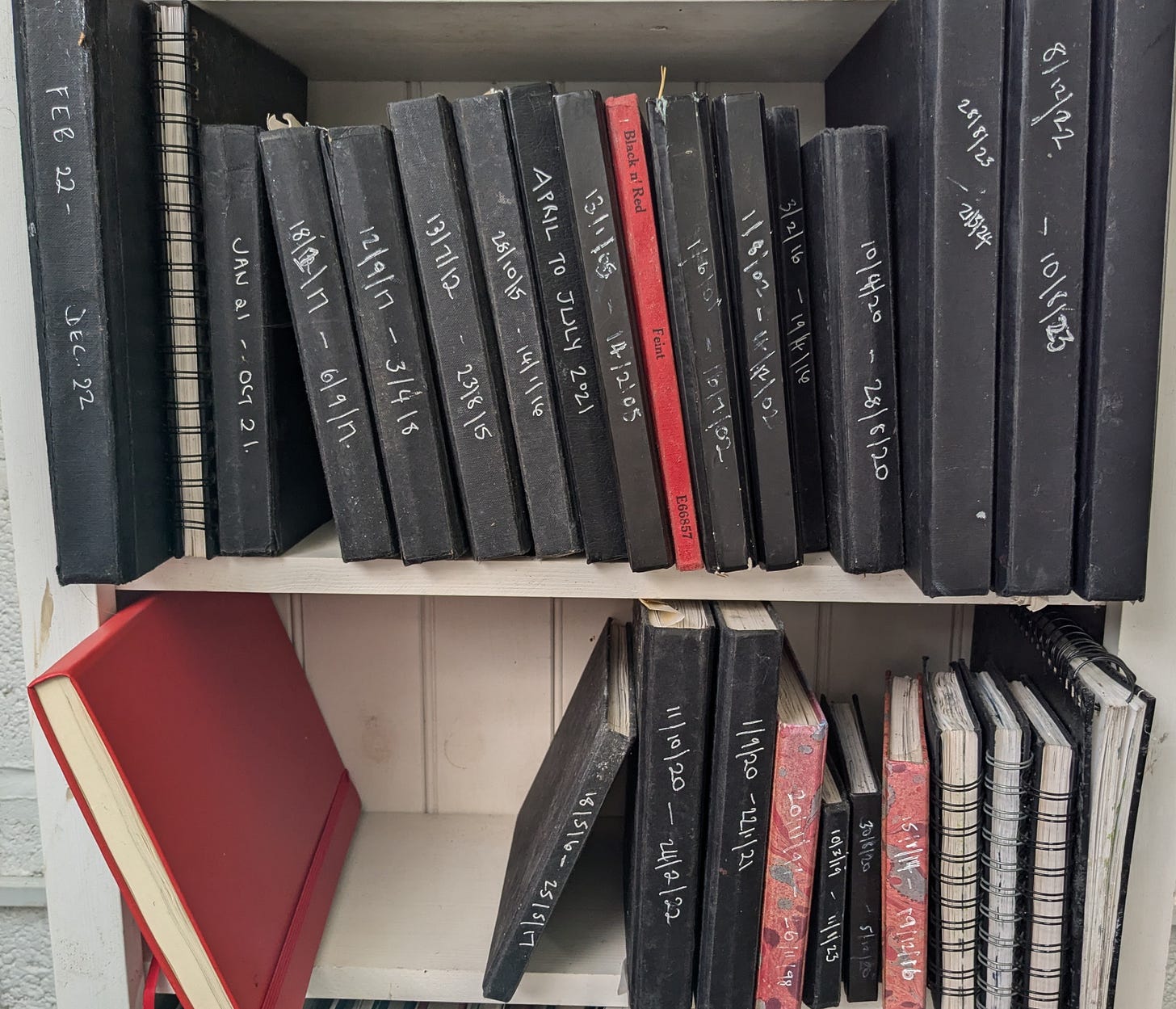
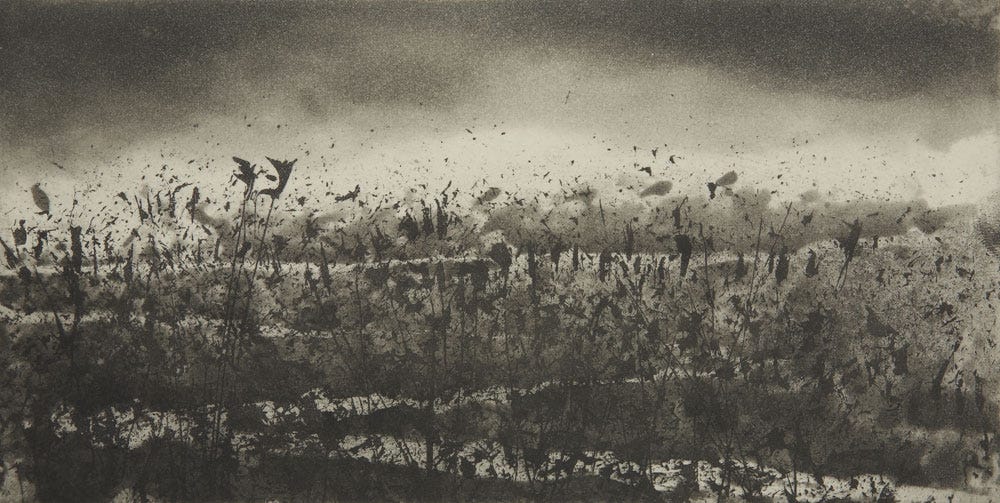
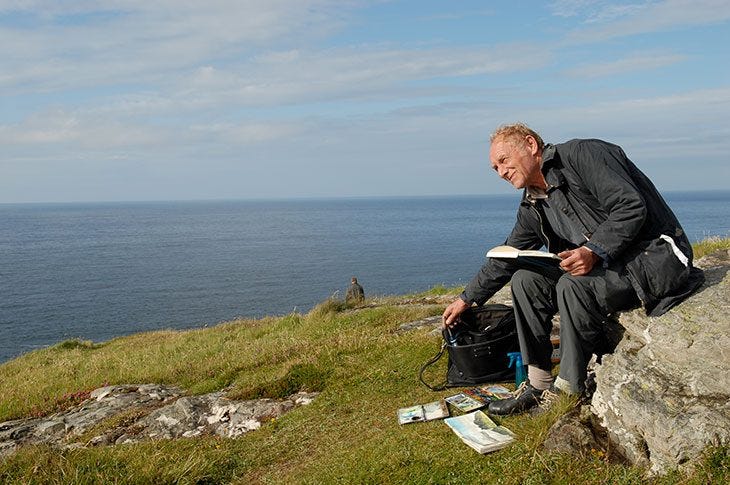
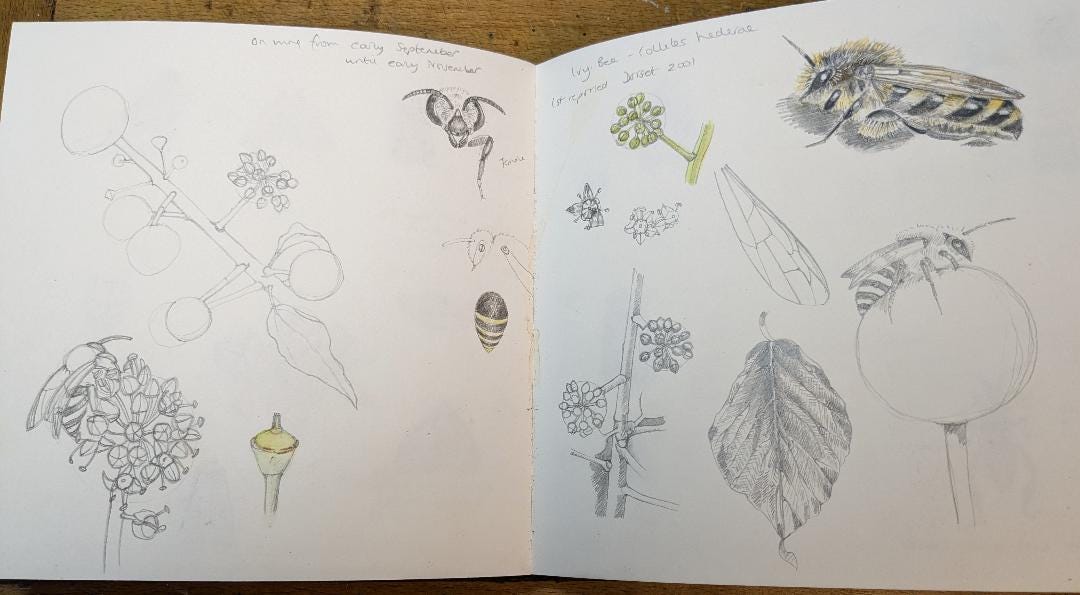
Lovely — the account of the sketchbooks, the memories and sharing of Norman Ackroyd, the ivy-dwellers, the Larkin — all of it.
I'm amazed at how perfect the quick sketches feel, quite unlike the writing that I do in notebooks, which I thought at first were analogous. These are beautiful, and I can see why people were wanting them — and absolutely see you wouldn't want to share all the time. The whole point of a notebook, for me, is that it's a no-duty-to-the-reader zone, and it sounds as a sketchbook might be a little the same.
Wonderful about 1000 followers, both for you and for them (us) who get to receive the posts!
I seem to read your posts on my way back from Kew Gardens on a Thursday morning, and I love that they continue the nature theme for me. It’s my first non teaching day of the week and it’s always a treat to read!
I’ve always struggled with keeping a sketchbook and I don’t really know why. I do work in sketchbooks and on paper but I don’t have a regular practice. I would like to get into the habit of keeping one.
Thanks for the Norman Ackroyd links too, I was really sad when I heard he died. I love his prints and way of working, such an inspiration to artists and printmakers. Xx